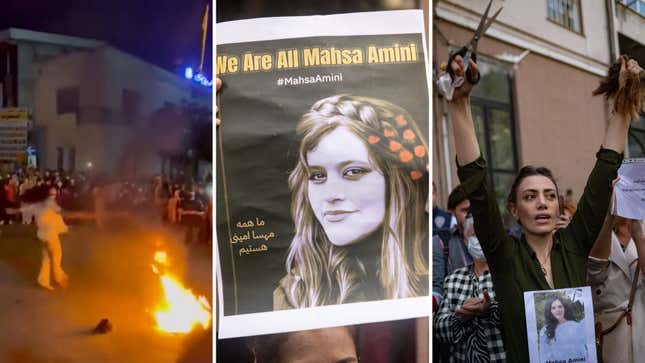Powerful Videos, Photos of Protests Over Iranian Woman’s Death Flood Internet
Following Mahsa Amini's death, thousands of Iranians continue to protest even as police reportedly open fire and state agents beat demonstrators with clubs.
Entertainment

A woman twirls around around a fire—long black hair free and flowing—before tossing her hijab into the flames and other women follow, as a massive crowd cheers them on. It’s a deeply powerful and moving scene. And it’s just one of the dozens emerging from the protests in Iran, which show a country full of angry citizens who want to burn their repressive regime to the ground.
Following outrage over the death of 22-year-old Mahsa Amini, protests in Iran have quickly escalated, erupting in both major cities and more conservative regions since the first demonstrations over the weekend. Police are reportedly opening fire and surrounding universities. The Basij, the volunteer arm of Iran’s paramilitary Revolutionary Guard, are chasing protesters and beating them with clubs. Yet thousands of Iranians are continuing to publicly scream about the theocracy’s strict dress code, conservative rules, and oppressive treatment of women, despite the risk of imprisonment or death.
Amini, a Kurdish woman who was visiting Tehran from her hometown hundreds of miles west of the city, was arrested on Sept. 13 by the country’s so-called morality police—whose presence has increased since Iran’s current president, Ebrahim Raisi, was elected in June—for wearing her hijab too loose. She died on Sept. 19 while in police custody. Authorities said she had a heart attack then fell into a coma, but her father told a pro-reform Iranian news site that she had no history of heart problems. Her family was also not allowed to see her body.
-

-

-

-

-

-

-

-

-

-

-

-

-

-

-

-

-

-

-

-

-

-

-

-

-

-

-

-

-

-

-

-

-

-

-

-

-

-

-

-








































